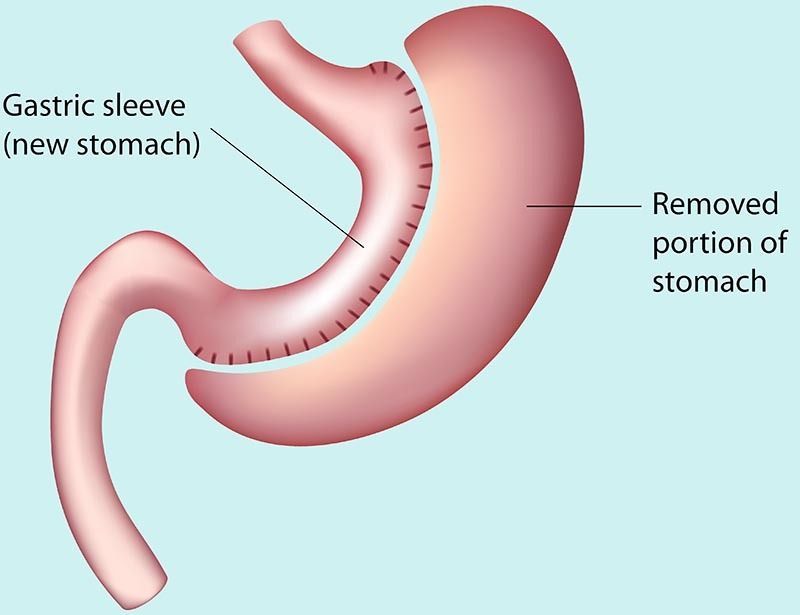Gastric Sleeve in Japan
Search and Compare the Best Clinics and Doctors at the Lowest Prices for Gastric Sleeve in Japan

Find the best clinics for Gastric Sleeve in Japan
No pricing info available
Egypt offers the best prices Worldwide
Price: $ 777
From 94 verified reviews
Hisanori Kakuma, 16 September 2020
Thank you for all the help you have given me
The University Hospital of Tokyo, located in Chome Yushima, Tokyo, Japan offers patients Gastric Sleeve procedures among its total of 286 available procedures, across 30 different specialties. Currently, there's no pricing information for Gastric Sleeve procedures at The University Hospital of Tokyo, as all prices are available on request only. There is currently a lack of information available on the specialists practicing at the Hospital, and they are not accredited by any recognized accreditations institutes
- Home
- Japan
Compare Before & After Photos of _procedure_photos.phpGastric Sleeve


Front view


Full-side view


Front view


Front view


Front view


Front view
WHY US?
At Medijump, we're making medical easy. You can search, compare, discuss, and book your medical all in one place. We open the door to the best medical providers worldwide, saving you time and energy along the way, and it's all for FREE, no hidden fees, and no price markups guaranteed. So what are you waiting for?

Free

Best Price

Widest Selection

Risk-Free
What you need to know about Gastric Sleeve in Japan

The Gastric Sleeve procedure, also known as Vertical Sleeve Gastrectomy or Sleeve Surgery, is a minimally invasive surgical method designed to advocate weight loss and promote healthier living. It garners acclaim from medical professionals due to its effectiveness in helping patients shed an average of 65 to 70% of excess weight.
The expert surgeons at NYBG utilize the single-incision laparoscopic technique, making a solitary entry point through the belly button. This innovative approach results in minimal to no scarring and significantly reduces the recovery duration.
The surgery itself only takes about 35 minutes. During this time, the surgeon implements a diminutive camera, a laparoscope, along with several other instruments to perform the operation. With the help of a stapling apparatus, 85-90% of the patient's stomach is removed, leaving behind a banana-shaped stomach that is a mere 10-15% of the original volume.
What does a Gastric Sleeve Procedure Involve?
For your surgery, you'll be under general anesthesia, ensuring you're comfortably asleep throughout the procedure. Your surgeon will perform a laparoscopic surgery, making several small incisions on your upper abdomen where a laparoscope and tiny surgical instruments will be inserted.
Following this, the anesthesiologist will guide a sizing tube through your mouth and down into your stomach. With a laparoscopic stapler, the surgeon will partition the stomach, resulting in a narrowed vertical sleeve. The excess portion of the stomach that has been detached is then extracted from the abdomen through one of the incisions. Lastly, your surgeon may carry out a dye study or an upper endoscopy to double-check for any potential leaks in the newly formed sleeve.
How Long Should I Stay in Japan for a Gastric Sleeve Procedure?
Following a surgical procedure, patients typically reside in a rehabilitation centre for an initial 2 to 3-day period. Please note, that this duration can flex based on how the individual's body responds to the healing process.
It is highly recommended patients continue their stay in the pertinent vicinity for an additional 3 weeks subsequent to the surgical procedure. Such an arrangement allows for meticulous post-operative monitoring and fosters an environment conducive to a smooth recovery. A surgical procedure entails both physical and mental recovery; the latter being equally pertinent. An additional stay provides the necessary time to recuperate, rest and efficiently handle any post-surgical complications that could potentially arise.
What's the Recovery Time for Gastric Sleeve Procedures in Japan?
The time it takes to fully recover from Gastric Sleeve varies from one person to the other. Factors such as personal healing rates, specific techniques used during the surgery and overall health condition affect the recovery time. Generally, patients would typically need about three to five weeks for recovery.
During this healing period, it's essential to maintain a healthy lifestyle to speed up recovery and reduce potential complications. Part of this involves a proper diet. Since the procedure usually results in a smaller stomach size, you will need to adjust your eating habits. It's recommended to consume smaller meals throughout the day, focusing more on nutrient-rich foods.
Exercise is another crucial component of the post-procedure period. Stick to a regular workout routine to support sustained weight loss and overall health improvement. They suggest several strategies and provide important tips to stay healthy during your recovery period.
What sort of Aftercare is Required for Gastric Sleeve Procedures in Japan?
Going through the Gastric Sleeve is just the start of your path toward better health. After the treatment, it's crucial that you take good care of yourself for the full healing process and to ensure the success of the procedure. Part of this care involves sticking to a healthy diet, regular exercise, taking any medications as recommended by your doctor and keeping up with medical check-ups. Your dedication to these new lifestyle habits, especially with regard to your diet and physical activities can notably speed up your recovery and assist you in achieving your weight goals.
Equally, your mind requires care after the Gastric Sleeve. Undergoing such changes could bring about feelings that may impact your emotional state and overall adherence to these new lifestyle changes. In such cases, seeking professional mental health support can be beneficial in managing any stress, anxiety, or depression you might encounter. Balancing physical well-being and mental health is key to a full recovery and maintaining long-term health after undergoing the Gastric Sleeve.
What's the Success Rate of Gastric Sleeve Procedures in Japan?
The achievement fee for the Gastric Sleeve in Japan is usually high. Success is often gauged through the quantity of weight lost. Typically, patients can assume to shed approximately 60% to 70% of their excess weight.
The general fitness enhancement often discovered with Gastric Sleeve can result in improvements or maybe a complete decision of weight problems-related situations like hypertension, sleep apnea, cardiovascular sicknesses, and type 2 diabetes. However, fulfilment after the Gastric Sleeve is dependent on the commitment to lifestyle adjustments and publish-op care. Results can range based totally on the dedication to nutritional modifications along with other elements like exercising, genetics, and typical fitness popularity.
Are there Alternatives to Gastric Sleeve Procedures in Japan?
Yes, there are options for the Gastric Sleeve in Japan. These can be classified into non-surgical and surgical alternatives. Non-surgical alternatives include weight loss plans and lifestyle adjustments, scientific weight reduction applications, and prescription weight reduction medicines.
On the other hand, surgical options for the Gastric Sleeve consist of different bariatric surgical procedures like gastric bypass surgical procedure, adjustable gastric banding, duodenal transfer, and gastric balloon techniques. These options carry their personal set of advantages, fitness implications, and requirements.
What Should You Expect Before and After the Procedure?
Before the Gastric Sleeve, patients usually have an intensive scientific evaluation and are required to observe a pre-operative eating regimen, to limit surgical headaches and useful resource recovery. Patients additionally undergo a psychological assessment to evaluate their emotional readiness for surgery and the subsequent way of life modifications.
Post-manner, maximum patients will stay in the clinic for two to a few days to be monitored. Gradual nutritional changes occur over the next several weeks, progressing from clean liquids to pureed foods, onto gentle foods and finally, strong meals. Both vitamins and exercise plans are customized for man or woman sufferers.
What's the Key to Long-Term Success with Gastric Sleeve in Japan?
Surgical intervention is an important part of the Gastric Sleeve, but it's not the only factor that ensures long-term success. A larger part of this success is the adoption of a healthier lifestyle post-procedure. Regular exercise, attending follow-up medical appointments, vigilantly monitoring your vitals, keeping an eye on your nutrition intake, and adhering to prescribed medication regimes are fundamental components of this lifestyle. A commitment to these practices guarantees sustainable results, as the procedure alone may not uphold the achieved results indefinitely.
Incorporating changes into daily routines forms another essential half of this post-treatment lifestyle. Conscious meal planning, mindful eating, moderating portion sizes, and avoiding high-calorie drinks or snacks are beneficial dietary changes. Also, routine physical activity and maintaining an active life can help retain an optimized body weight. More importantly, mental and emotional support from loved ones - and at times professional counselling - can greatly improve the chances of adherence to these new routines. Finally, remember that this isn't just a treatment procedure but a significant shift towards a healthier lifestyle for the betterment of your future.
Where Can I Get the Best Gastric Sleeve Care in Japan?
There are many great healthcare centres in In Japan. They offer good care and treatments for people having the Gastric Sleeve. When picking on one, remember to look at the doctor's experience, the certifications of the facility, what other patients say about them, and if they are accredited.
Make sure they also offer aftercare once the Gastric Sleeve is done. This includes advice about what to eat and how to keep healing. This can help you stay healthy after surgery and is very important for the success of the Gastric Sleeve. Meeting with a support group can also help you in the long run.
How Can Gastric Sleeve Improve My Quality of Life?
Gastric Sleeve can significantly improve your quality of life in various ways. The principal benefit of it is the significant weight loss you can achieve. This dramatic change in body mass can reduce your vulnerability to long-term health issues like diabetes and heart disease.
Another advantage of Gastric Sleeve is the improvement in your confidence. A boost in self-esteem inevitably leads you to feel content and positive about life. Severe health problems like sleep apnea can also be mitigated with this treatment. So, Gastric Sleeve isn't just about physical transformation, it's about leading a healthier, happier life in Japan.
Whilst the information presented here has been accurately sourced and verified by a medical professional for its accuracy, it is still advised to consult with your doctor before pursuing a medical treatment at one of the listed medical providers
No Time?
Tell us what you're looking for and we'll reachout to the top clinics all at once
Enquire Now

Popular Procedures in Japan
Prices Start From $1

Prices Start From $359

Prices Start From $435

Prices Start From $75

Prices Start From $435

Recommended Medical Centers in Japan for Gastric Sleeve

- Interpreter services
- Translation service
- Religious facilities
- Medical records transfer
- Medical travel insurance
- Health insurance coordination
- TV in the room
- Safe in the room
- Phone in the room
- Private rooms for patients available

- Interpreter services
- Translation service
- Religious facilities
- Medical records transfer
- Medical travel insurance
- Health insurance coordination
- TV in the room
- Safe in the room
- Phone in the room
- Private rooms for patients available

- Interpreter services
- Translation service
- Religious facilities
- Medical records transfer
- Medical travel insurance
- Health insurance coordination
- TV in the room
- Safe in the room
- Phone in the room
- Private rooms for patients available

- Interpreter services
- Translation service
- Religious facilities
- Medical records transfer
- Medical travel insurance
- Health insurance coordination
- TV in the room
- Safe in the room
- Phone in the room
- Private rooms for patients available

- Interpreter services
- Translation service
- Religious facilities
- Medical records transfer
- Medical travel insurance
- Health insurance coordination
- TV in the room
- Safe in the room
- Phone in the room
- Private rooms for patients available

- Interpreter services
- Translation service
- Religious facilities
- Medical records transfer
- Medical travel insurance
- Health insurance coordination
- TV in the room
- Safe in the room
- Phone in the room
- Private rooms for patients available

- Interpreter services
- Translation service
- Religious facilities
- Medical records transfer
- Medical travel insurance
- Health insurance coordination
- TV in the room
- Safe in the room
- Phone in the room
- Private rooms for patients available

- Interpreter services
- Translation service
- Religious facilities
- Medical records transfer
- Medical travel insurance
- Health insurance coordination
- TV in the room
- Safe in the room
- Phone in the room
- Private rooms for patients available

- Interpreter services
- Translation service
- Religious facilities
- Medical records transfer
- Medical travel insurance
- Health insurance coordination
- TV in the room
- Safe in the room
- Phone in the room
- Private rooms for patients available
Gastric Sleeve in and around Japan
About Japan
Japan is special in its own way; the culture, food, people, as well as technology are envied by the world over. With old Japan, comes the ancient tradition in the form of a geisha performance, onsen (hot spring) visit in the mountains, tea ceremony, or shrine visit. In contrast, there is modern Japan, full of smart systems and electronics, colorful advertisements and displays, and ultra-modern architecture. In recent years, Japan has become one of the top destinations in the world for oncology treatments and sees many tens of thousands of medical tourists each year. Many of these travel from within the region, including China and Korea, but they are unable to compete with the SE Asian nations with prices. Private hospitals are located across the country, with a particular focus in major cities like Tokyo, Kyoto, and Osaka. 25 of these facilities are JCI-accredited, with many offering Gastric Sleeve procedures.
Popular Parts of Japan
Located in the Pacific Ocean, Japan is a stratovolcano archipelago. The four largest islands are Honshu, Hokkaido, Kyushu, and Shikoku. With a population of 127 million, 98% are ethnic Japanese. The country perfectly balances traditional with modern technology. Tourists will first see its exceptionally modern face, but after traveling around, they will find many opportunities to connect with the beautiful traditional culture.
- Tokyo is Japan’s capital, one of the 47 prefectures of Japan. It’s a huge metropolis that offers traditional arts and culture, futuristic infrastructures, and good restaurants. The cherry blossoms that bloom in Spring is one of the most popular sights. The soft pink petals are an icon of the country. There is an unlimited choice of shopping, many museums that cover every era of Japanese art history, and even a robot restaurant.
- Kyoto is made of religious architecture, with around 2000 temples and shrines. It moves at a slower pace than any other city in Japan. Filled with samurais, geishas, Zen gardens, and the torii gate, Kyoto is the spiritual center of Japan. The city is also known for its food, head to the Nishiki Market, a four-hundred-year-old local food market that offers a range of national cuisine to modern food from all over the world.
- Osaka, the second largest metropolitan area after Tokyo is known to be the most delicious city. The city is nicknamed “the nation’s kitchen.” Visit Dotonburi to experience the food culture of Osaka. Besides the food, there are numerous attractions that tourists should visit such as Universal Studios Japan, Cup Noodles Museum, Aquarium Kaiyukan, Osaka Castle, and Umeda Sky Building.
- Fukuoka has a welcoming feel with sunny weather and so much to do. It’s made up of two towns, the port city of Hakata and the former castle town of Fukuoka. Visit the impressive Fukuoka Castle, explore the Sumiyoshi-Jinja Shrine, learn history in Kyūshū National Museum, experience the ancient art of calligraphy and origami in Hakata Machiya Folk Museum, and enjoy a calming bath in one of the Onsen hot springs.
- Nagoya is the industrial center of Japan. It’s the birthplace of Toyota and a popular pinball-style game Pachinko. Although many of the historic buildings were destroyed in the air raids of 1945, tourists can still indulge in its culture and tradition. Visit the Nagoya Castle that was reconstructed in 1959, walk around the Atsuta Shrine, or see the history of the automobile in the Toyota Automobile Museum.
Weather and Climate in Japan
Japan has four distinct seasons.
- Summer starts in June and lasts until August. The temperature can get very hot, up to 40 °C in some places, with high humidity. June is the rainy season where the farmers plant their rice. The rainy season is over in August but the typhoon season starts to peak.
- Autumn starts in September and ends in November. September has the greatest risk of typhoons. The weather is generally mild. October is pleasantly warm with less humidity than in summer, making it a food time for traveling the country.
- The temperature will drop in Winter. It lasts from December to February and is usually dry, pleasant, and sunny. The average temperature is around 2°C to 12°C, it rarely drops below 0°C. The northern island of Hokkaido, the Japan Alps, and the Japan Sea coast get a lot of snow while Tokyo gets very little snow.
- Spring is said to be the best time to visit Japan because of its mild weather and cherry blossoms. The season starts in March and ends in May. The temperature will gradually increase during spring with little rainfall and clear sky.
Getting Around in Japan
The main airport for international tourists is the Narita International Airport. It is located around 60km east of central Tokyo. It serves both domestic and international flights to almost every major city around the globe. There are several budget airlines that operate flights from this airport, namely Jetstar Japan, Eastar Jet, and Peach. There are other international airports such as Kansai International Airport, New Chitose International Airport, and Kyushu Saga International Airport.
To get to Tokyo from Narita Airport, tourists can use the rail, bus, taxi, or car rental. The most affordable train line is the Keisei Line that connects with the Toei Asakusa Subway Line and the Yamanote Line, it costs around ¥1,190 to ¥1,230 ($10 to $11.3). There’s also the Sky Access Express train that offers better access to Tokyo, a trip to Asakusa will cost around ¥1,290 ($11.9) and take about 58 minutes. The quickest way to get to Tokyo will be by the Skyliner train, it takes just 36 minutes to Nippori and will cost around ¥2,470 ($22.7). The airport introduced N’EX Tokyo Round-Trip ticket for foreign passport holders that provides round-trip travel from Narita to Tokyo and back for ¥4,000 ($37) for adults and ¥2,000 ($18.4) for children.
A regular taxi from Narita to Tokyo is very expensive, usually over ¥20,000 ($184). The best option is the shared minibus that starts with ¥6,180 ($57) per person. Buses are usually more affordable, the Limousine Bus costs ¥2,880 ($26.5) and the Tokyo Shuttle costs around ¥900 ($8) to ¥1,000 ($9).
Getting around Japan is fairly easy because the country has excellent public transportation. It is recommended to get a Japan Rail Pass. Japan’s bullet train is fast but expensive. There are cheaper train options. Buses are less expensive but will take more time than trains.
Tourist Visas in Japan
Citizens of 68 countries and territories can enter and stay in Japan for up to 90 days without a visa. Citizens of Indonesia, Brunei, and Thailand are granted a 15-day visa-free trip to Japan. Citizens of the United Arab Emirates are allowed to stay for 30 days without a visa. It is advisable to contact the nearest Consular Section of the Embassy or Consulate General of Japan for more information.
Additional Information
- Local Currency: Yen (¥) is the local currency. $1 will get you ¥11 ¥1,000 is worth approximately $9.
- Money & Payments: ATMs are usually located in post offices and convenient stores. There are only a few branches of major Japanese banks that accept foreign-issued cards. Credit cards are accepted in major cities, but the rural area doesn’t. It’s best to always bring cash and bring a coin purse because everything below ¥500 is coins. Tipping is not mandatory, high-end hotels and restaurants usually add a 10% service fee to the bill.
- Local Language: The official language is Japanese. English is common in major cities with many tourists such as Tokyo, Osaka, and Tokyo. Some restaurants write their menu in English and Japanese.
- Local Culture and Religion: The dominant religion in Japan is Shinto and Buddhism. There’s a small group of Christians as well.
- Public Holidays: Japan has sixteen national holidays each year, including Children’s Day, Constitution Memorial Day, and Marine Day. The country hosts numerous annual festivals such as Gion Matsuri in Kyoto, Awa Odori in Tokushima, and Yuki Matsuri Snow Festival in Sapporo.
Popular Searches
- Plastic Surgery in Thailand
- Dental Implants in Thailand
- Hair Transplant in Thailand
- Breast Augmentation Thailand
- Gastric Sleeve in Thailand
- Gender Reassignment Surgery in Thailand
- Laser Hair Removal in Bangkok
- Botox in Bangkok
- Dermatology in Bangkok
- Breast Augmentation in Bangkok
- Coolsculpting in Bangkok
- Veneers in Turkey
- Hair Transplant in Turkey
- Rhinoplasty in Turkey
- Stem Cell Therapy in Mexico
- Rhinoplasty in Mexico
- Liposuction in Mexico
- Coolsculpting in Tijuana
- Rhinoplasty in Korea
- Scar Removal in Korea
- Gastric Sleeve in Turkey
- Bone Marrow Transplant in India
- Invisalign in Malaysia
- Plastic Surgery in the Dominican Republic
- Tummy Tuck in the Dominican Republic
- Plastic and Cosmetic Surgery in Poland
- Rhinoplasty in Poland
- Hair Implant in Poland
- Dental Implants in Poland
- IVF in Turkey

